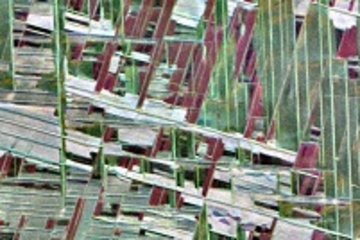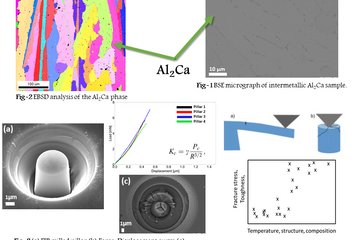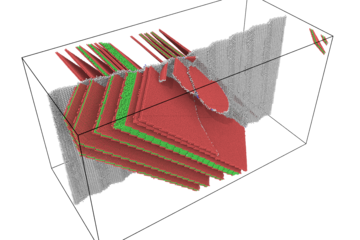All genres
1.
Journal Article
Fabrication of Robust Reference Tips and Reference Electrodes for Kelvin Probe Applications in Changing Atmospheres. Langmuir 33 (41), pp. 10807 - 10817 (2017)
2.
Journal Article
MAXNET Energy – Focusing Research in Chemical Energy Conversion on the Electrocatlytic Oxygen Evolution. Green 5 (1-6), pp. 7 - 21 (2015)
3.
Journal Article
Electrochemical characterization of direct electron uptake in electrical microbially influenced corrosion of iron by the lithoautotrophic SRB Desulfopila corrodens strain IS4. Electrochimica Acta 167, pp. 321 - 329 (2015)
4.
Journal Article
Editorial: Chemistry and the Max Planck Society: A Stable Bond Resonating into the Future. Angewandte Chemie International Edition 54 (20), pp. 5798 - 5799 (2015)
5.
Journal Article
Editorial: Die Chemie in der Max‐Planck‐Gesellschaft – Vergangenheit und Zukunft einer erfolgreichen Verbindung. Angewandte Chemie 127 (20), pp. 5892 - 5893 (2015)
6.
Journal Article
Lithiation and delithiation mechanisms of gold thin film model anodes for lithium ion batteries: Electrochemical characterization. Electrochimica Acta 164, pp. 81 - 89 (2015)
7.
Journal Article
Selective microbial electrosynthesis of methane by a pure culture of a marine lithoautotrophic archaeon. Bioelectrochemistry 102, pp. 50 - 55 (2015)
8.
Journal Article
Solvent-starved conditions in confinement cause chemical oscillations excited by passage of a cathodic delamination front. Chemical Communications 51 (89), pp. 16041 - 16044 (2015)
9.
Journal Article
Chemistry-dependent X-ray-induced surface charging. Physical Chemistry Chemical Physics 16 (40), pp. 22255 - 22261 (2014)
10.
Journal Article
Straight talk with ... Martin Stratmann. Nature Medicine 20 (7), p. 695 (2014)
11.
Journal Article
In situ infrared spectroscopic investigation of intermediates in the electrochemical oxygen reduction on n-Ge(100) in alkaline perchlorate and chloride electrolyte. Electrochimica Acta 106, pp. 472 - 482 (2013)
12.
Journal Article
Monitoring of anaerobic microbially influenced corrosion via electrochemical frequency modulation. Electrochimica Acta 105, pp. 239 - 247 (2013)
13.
Journal Article
Element-Resolved Corrosion Analysis of Stainless-Type Glass-Forming Steels. Science 341 (6144), pp. 372 - 376 (2013)
14.
Journal Article
A mechanistic study of the electrochemical oxygen reduction on the model semiconductor n-Ge(100) by ATR-IR and DFT. Physical Chemistry Chemical Physics 15 (16), pp. 5771 - 5781 (2013)
15.
Journal Article
Accelerated cathodic reaction in microbial corrosion of iron due to direct electron uptake by sulfate-reducing bacteria. Corrosion Science 66, pp. 88 - 96 (2013)
16.
Journal Article
Laser effects on volta potential transients recorded by a kelvin probe. ECS Electrochemistry Letters 2 (5), pp. H19 - H21 (2013)
17.
Journal Article
Simultaneous in-situ Kelvin Probe and Raman spectroscopy analysis of electrode potentials and molecular structures at polymer covered salt layers on steel. Electrochimica Acta 83, pp. 327 - 334 (2012)
18.
Journal Article
Marine sulfate-reducing bacteria cause serious corrosion of iron under electroconductive biogenic mineral crust. Environmental Microbiology 14 (7), pp. 1772 - 1787 (2012)
19.
Journal Article
In-situ detection of differences in the electrochemical activity of Al2Cu IMPs and investigation of their effect on FFC by scanning Kelvin probe force microscopy. Corrosion Science 58, pp. 307 - 314 (2012)
20.
Journal Article
A scanning Kelvin probe for synchrotron investigations: The in situ detection of radiation-induced potential changes. Journal of Synchrotron Radiation 19 (1), pp. 48 - 53 (2012)











